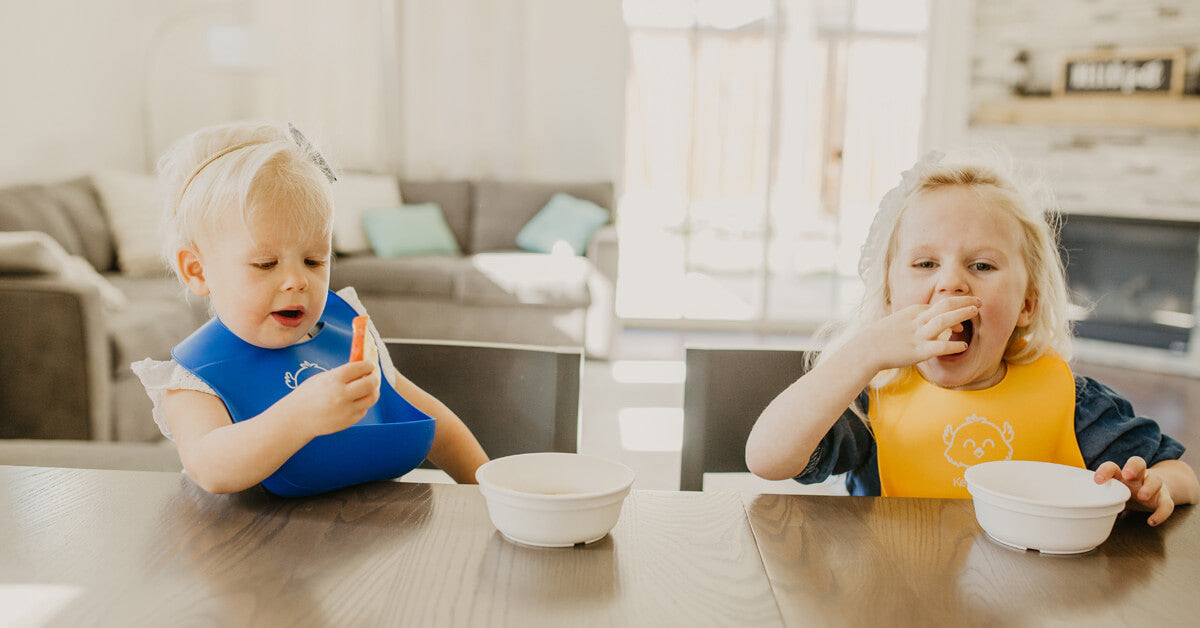
Introducing Baby to Solids: When and How
Are you overwhelmed by the various methods of introducing solid foods to your baby? Purees? Or Baby Led Weaning (BLW) or both? Not sure what nutritious foods to focus on for your baby? Let's see what works for you and your family!
Are you a parent whose baby is nearing the age to start solid foods?
Are you overwhelmed by the various methods of introducing solid foods to your baby? Purees? Or Baby Led Weaning (BLW) or both?
Not sure what nutritious foods to focus on for your baby?
Now, I want to preface and say that there is no right or wrong approach. With everything in parenting, we all do things differently, and that’s okay! You need to find what works for you and your family!
As a registered dietitian and international board-certified lactation consultant, I do tend to encourage the baby-led weaning/feeding approach where babies learn to safely feed themselves whole foods. This method is called Baby Led Weaning (BLW), where the baby feeds themselves whole foods, as opposed to someone else spoon-feeding the baby.
Personally, I don’t like the term ‘weaning’ as this suggests weaning from formula/breastmilk when formula/breastmilk really should be the main source of their nutrition that first year. The term weaning was coined by British resident Gill Rapley where weaning means the introduction of solid foods and more so weaning from the spoon.
I thought I’d discuss when to give solids, and what nutritious foods to focus on and why Baby Led Weaning is a nutritious, safe approach.
The American Academy of Pediatrics, the World Health Organization, and the CDC, three major health organizations, all recommend introducing solid foods at 6 months. 6 months is generally when babies are able to sit by themselves with minimal support, their tongue-thrust reflex is gone, they’re picking food up and bringing it to their mouth with precision, and their gut is more mature. These are milestones you want to go off of before introducing solid foods, specifically the sitting with minimal support.
The addition of food at 6 months is meant to fill in the nutritional gaps, specifically the mineral iron. Breastmilk naturally is low in iron and this is actually a good thing since gut bacteria thrive on iron. Breastmilk contains a protein called lactoferrin which picks up iron (the small amount that breastmilk has) and removes it from the body to prevent harmful bacteria from growing in the baby’s gut. Since breastmilk is low in iron, babies have built-in iron stores. These built-in iron stores that babies are born with are dependent on mom’s iron stores during pregnancy, how many weeks gestation your baby was born at (preemies are going to have lower iron stores), and whether you did delayed cord clamping. Around 6 months, your baby’s iron stores start to decrease and this is why we want to introduce iron-rich food like meats, beans, eggs, fish, cooked spinach, etc to the baby.
Around this age, we also want to start introducing allergenic foods like peanuts, eggs, wheat, dairy, soy, sesame, seafood, shellfish, and tree nuts, which can help prevent babies from developing allergies down the road. If you have a family history of allergies, definitely consult with your pediatrician.
Another nutrient I like to focus on is omega 3 fatty acids which helps with baby’s brain development. Offering low mercury fish like salmon, sardines, cod, halibut, as well as chia seeds, flax seeds, etc, can provide babies with these brain-healthy fats.
With BLW, babies learn to feed themselves whole foods. This encourages babies to work on their motor skills and dexterity since they’re having to figure out how to pick up food and bring it to their mouths. It’s allowing them to eat different textures, different flavors, and different shapes.
Since BLW is about offering a variety of textures, purees are just another texture! So you don’t need to avoid pureed textures like hummus, applesauce, Greek yogurt, or even making your own purees if you’d like. Just be sure to offer a variety of textures. As long as the solid food is “smooshable,” you don’t need to worry about choking. Research shows us that BLW does not have a higher prevalence of choking.
One thing about BLW is that it's messy!! You’re allowing your baby to play and pick up food, which can be very messy. I highly recommend KeaBabies Silicone Bibs, which protects your little one's clothing from food stains, and has a wide food pocket catcher that's great for catching any food your little one drops. I know how frustrating it can be when food falls on the floor. These bibs can help reduce the amount of food that falls on the floor, plus they’re super easy to clean! I love them, putting them on is easy and your cute little one is ready for mealtime.
If you want to make your own purees or just store some leftover food for your baby that they didn’t finish, KeaBabies offers 4oz glass jars to store your food. You can also prepare portions of food for each feeding and put them in these glass jars so if a caregiver has to take care of your baby, you can be sure they’re giving the right serving. There’s a lot of concern about plastic and BPA. These Prep Food Jars are safe from any chemicals and make storing, freezing, and reheating food easy. It’s a must-have for baby feeding!
|
|
Meet Our Guest Writer: Allegra Gast, RDN, IBCLC Allegra is a registered dietitian and international board certified lactation consultant and postpartum doula. She is passionate about empowering families in their nutrition and breastfeeding journeys. She is a military spouse, currently stationed outside Destin, Florida. Allegra offers online courses, workshops and virtual 1:1 counseling through her private practice Aloha Nutrition, which she started when she was stationed in Hawaii. She loves food, babies, traveling, and teaching people how to feel and live better. |


























































